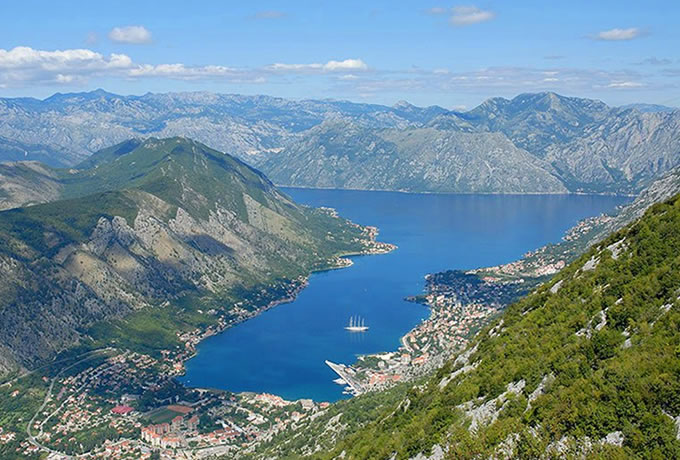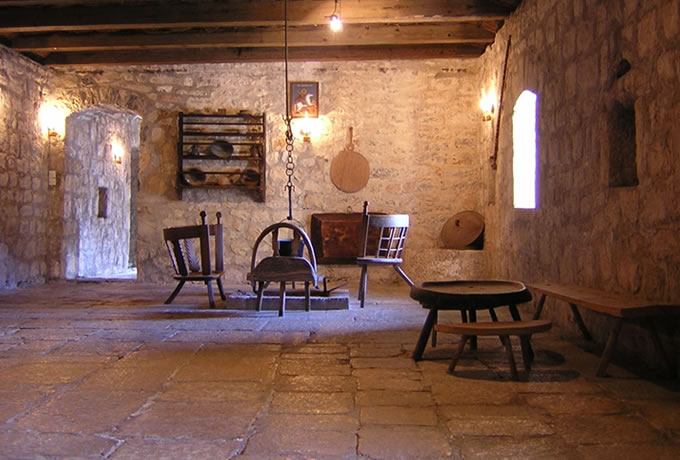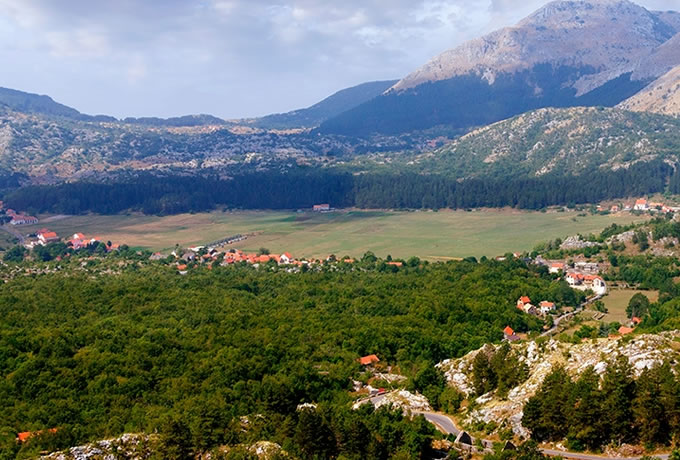
Njeguši
They were a Montenegrin tribe in Katuna nahia, Montenegro. The noble tribe is one of Katunna nahije - mountain villages around Lovcen and north of him, who were hard for themselves to "give away" from Turkey to the Turks, but to guard their "purge of Serbian liberty" in their purse. Like other tribes, nursing was shared among the blood communities - fraternities. One of them should have been Herakovici, Herak or Eraka, of which the close brotherhood of Petrović was separated. The other branch is Rajicevic-Po Rajic, and they should also be Radonjići, called Guvernadurovići by their government in their fraternity. The noble tribe was occupied by Njegosko Polje and the western foothills of Mount Lovcen, which rises above that field. About Njeguša are from the east of the Cetinjian Tribe, north of the Ceklići tribe, west and south of the Bay. The main part of the mountain is Njegosko Polje, where the villages are: Dugi Do, Herakovici, Kopito, Vrba and Rajićevići. In the north of the field are: Velji and Mali Zalaz, and in the south: Žanjev Do, Mirac and Masters. According to the data of 1927, the Njeguša tribe. there were 450 homes. Through Njeguše it passes the road from Cetinje to Kotor, and in ancient times it has managed the trade route.They are right, old and up to today preserved name. Ilija Ruvarac says, "that the Njeguši tribe called it by the name of the nicknamed Njegus called, whose name is already in the list of a Latin still in the 1000's" (Negusius Podcupica). and that is, by the magnitude of 400 houses, Jireček maintains that the name Njeguši originates from the personal name: "Njeguši od Njeguša (the basis of his - to strive, nurture, use Njegomir, Njegoslav, Njegoslav, Njegota)". He states that the name Njeguš - Niegusz exists in Poland and was also recorded in Herzegovina in 1740 and elsewhere. Vladika Vasilije in his "History of Černoj Gori" Njegoja calls Njegosima. At the beginning of the 17th century (1614), there were two hundred homes, with 480 armed men.
The tribe has become far ahead of time when we find it for the first time, certainly before the non-sensible state. It was undoubtedly founded by the Serbs Zećani, who in ancient times had recesses in Njeguš and Lovcen. According to the ancient Njegus there are two layers: old Njeguši and settlers. The ancestors are fraternities, whose ancestors have created this tribe and who were in Njeguje in the 15th century. They now make up one-third of the tribe. Half of them are descendants of the old Zećana, and half are of Bosnian origin. Many of the fraternities of the old Serbs from Zete, largely displaced by immigrants, extinct or evacuated, were the main group of the Veljokrajani, named after one part of the Njeguska Field in which they lived. Of them, in the 17th century, there were two Montenegrin metropolites, and perhaps the Rufim I. ruler was the birthplace of Njeguš. From indigenous peoples, they originate from Bosnia Punosevic, divided into several narrow fraternities. From their genus Bogdanovic they were nursing princes all the time.
From the end of the 15th century and later on, there are many people from different parts of the world. Of these, the most developed and highlighted two related fraternities, Herakovici and Rajićevići. According to the title of water, they originate from the brothers Herak and Raić, who fell to Bosnia under Turks (1463), crossed under the mountain of Njegos, and at the end of the 15th century at Nj. The Herakovians are divided into Petrovici and Popovići, and Rajicevici to Radonjići, Podubličani and Pende. Slave Đurđevđan. With several other immigrant fraternities, such as Popovići, originally from Očinić, Kustudija from Bjelopavlić, Vrbica from Vrba village in Herzegovina and others, they make up two-thirds of the tribes. Even in the 16th and 17th centuries, the natives made up the main mass of tribes and had leadership in it. Their immigrants gradually became more prominent, since the end of the seventeenth century, especially with the election of Prince Danil for the Montenegrin Metropolitan, dominated the tribe of the descendants of Heracles and Raić. Petrović is a Montenegrin dynasty. Radonjić was elected governor of Montenegro.
• The largest and very old, probably the oldest church in Njeguska polje, which is also the old church church of the whole tribe, dedicated to the Great Lady were built by other nursing starlets, later extended to the inauguration of the Stanislav Radonjić governorate. The inscription of the enclosed inscription on the (right) throne icon "Jesus Christ with the apostles" in the church of St. The Lady of Njegos, 76.5 hrs 113 cm, the work of Maksim Tujković from 1720, which reads: "The son icon is written by the sons of Staniše Popov: Vukosav, pop Vuko, Ivo and Marko, that (soul) to the resting (late) father of Stanis and the mother Stop ... God burn them. " Here, therefore, it is the pope of Staniše Radonjić's pope, of whom Vuko is the father of a later Montenegrin governor Stanislava or Stana mentioned in the accompanying inscription of the painter Rafail Dimitrijević from 1756 in the same church and in the same iconostasis. Pop Staniša Popov is also the son of the pope of Vučete Radonjin, and the brother of Pop Nikola - Žutoga and Rada. Right from these three brothers - the pope Stanis, the pope of Nikola Žutoga and Rada, Radonjići are divided into Stanišić-Guvernadurovići, Žutkovići and Radovići.




